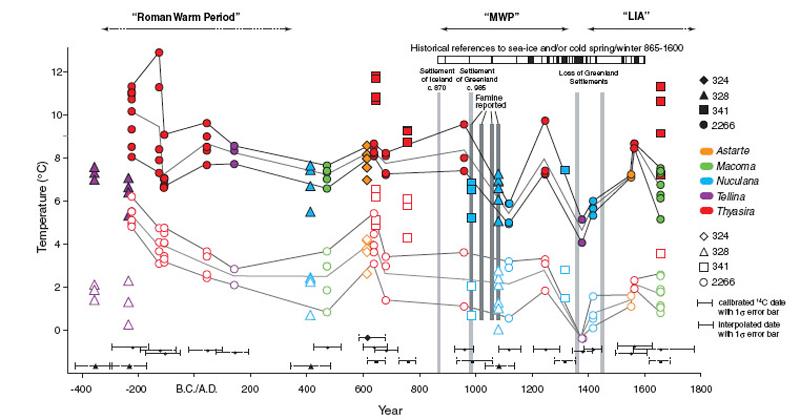There's a fascinating article at Nature's website at the moment, reporting on a new paper in PNAS in which William Patterson of the University of Saskachewan in Canada reveals his new clam-based temperature reconstruction.
The study used 26 shells obtained from sediment cores taken from an Icelandic bay. Because clams typically live from two to nine years, isotope ratios in each of these shells provided a two-to-nine-year window onto the environmental conditions in which they lived.
Patterson's team used a robotic sampling device to shave thin slices from each layer of the shells' growth bands. These were then fed into a mass spectrometer, which measured the isotopes in each layer. From those, the scientists could calculate the conditions under which each layer formed.
The resolution is remarkable, down to as little as a week and with Patterson holding out the possibility of daily resolution in future. As Patterson puts it, this opens the door to the study of paleoweather and the possibility of studying seasonal changes changes.
The reconstruction is pretty interesting too, with a hint of a little ice age, a clear medieval warm period and the turn of the first millennium appearing as warmer even than medieval times.
But what's really interesting is the modern era. Are current temperatures unprecedented or not? That's what we all want to know. Well, we don't know because Patterson's results seem to stop at 1800 AD.
Perhaps he explains in the full paper.

 Bishop Hill
Bishop Hill